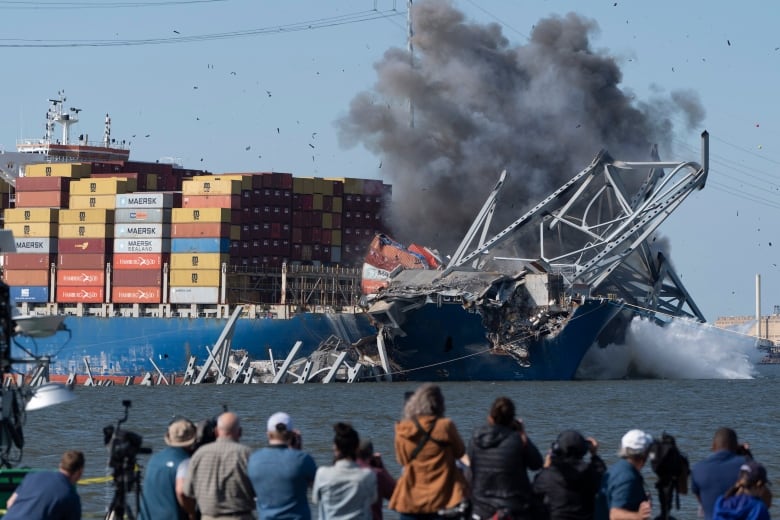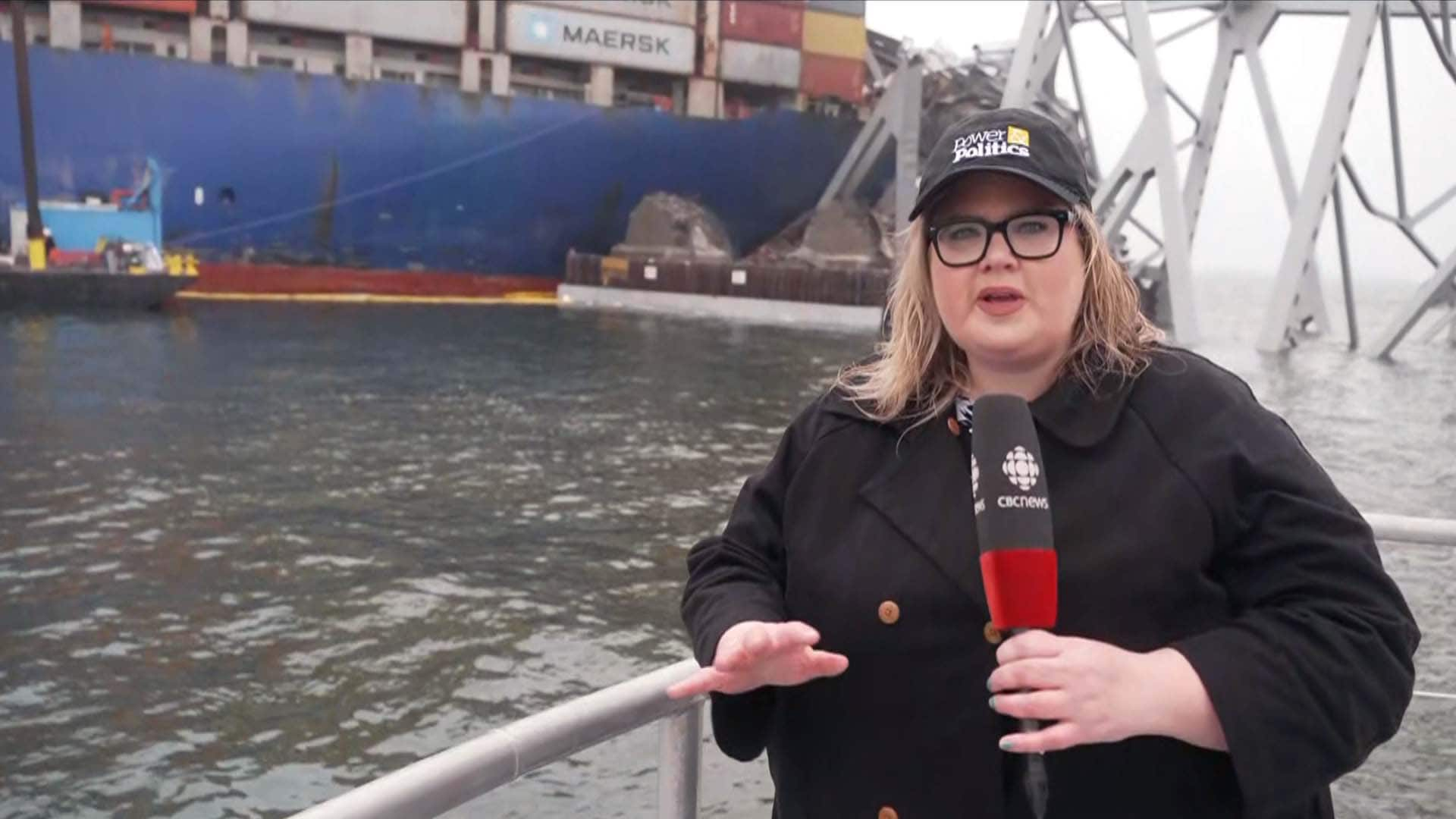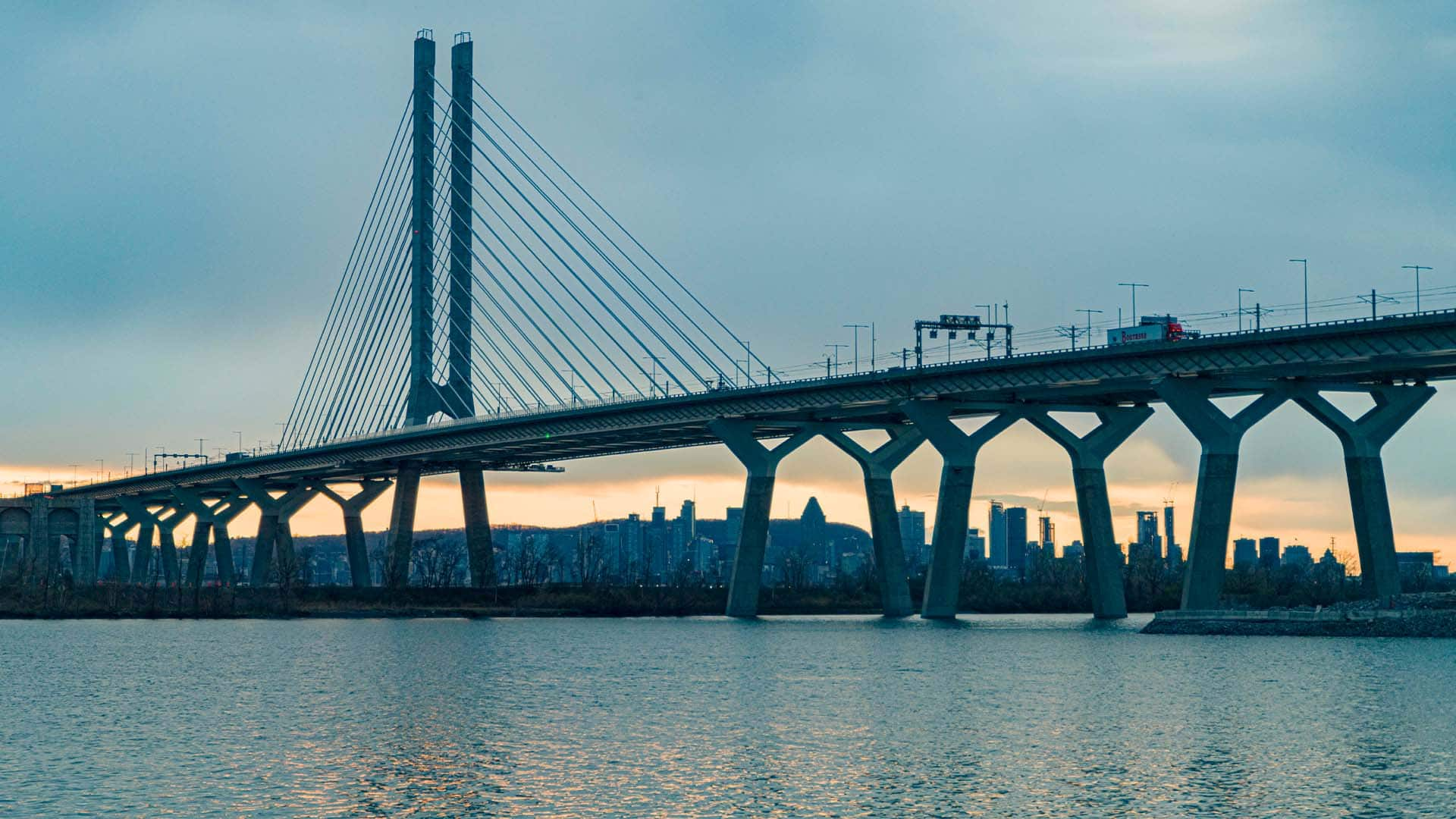The cargo ship Dali experienced electrical blackouts about 10 hours before leaving the Port of Baltimore and yet again shortly before it slammed into the Francis Key Bridge and killed six construction workers, federal investigators said Tuesday, providing the most detailed account yet of the tragedy.
The first power outage occurred after a crew member mistakenly closed an exhaust damper while conducting maintenance, causing one of the ship’s diesel engines to stall, investigators with the National Transportation Safety Board (NTSB) said in their preliminary report.
Shortly after leaving Baltimore early on March 26, the ship crashed into one of the bridge’s supporting columns because another power outage caused it to lose steering and propulsion at the exact worst moment.
The report provides new details about how the ship’s crew addressed the power issues it experienced while still docked in Baltimore.
A full investigation could take a year or more, according to the safety board. Meanwhile, the FBI has opened an investigation to see if any criminal charges are warranted.
A 21-member crew of Indian and Sri Lankan men has spent the last 50 days confined to the hulking and motionless cargo vessel, with their phones seized by investigators.

Darrell Wilson, a spokesperson for Synergy Marine, the Dali’s Singapore-based management company, said earlier this week the men will remain on the ship “for the foreseeable future” as the crash investigations continue.
Wilson said crewmembers have stayed busy, focused on the many tasks of running a large cargo vessel. They’ve also participated in the ongoing federal investigation and assisted with salvage operations of the collapsed bridge.
While the men have been given new phones, the old ones contained their contacts, family photos and banking apps for transferring money.
Significant power issues, but not at previous ports
According to the preliminary NTSB report, test of the ship’s fuel did not reveal any concerns related to its quality.
The Dali was headed from Baltimore to Sri Lanka, laden with shipping containers and enough supplies for a month-long voyage. It arrived in the U.S. from Singapore on March 19, and investigators said they were not aware of any power outages occurring in previous stops made at ports in Newark, N.J., and Norfolk, Va.
After the initial blackout caused by the closed exhaust damper, investigators say a backup generator automatically came on. It continued to run for a short period — until insufficient fuel pressure caused it to kick off again, resulting in a second blackout. That’s when crew members made changes to the ship’s electrical configuration, switching from one transformer and breaker system that had been in use for several months to another that was active upon its departure, according to the report.
CBC News gets exclusive Canadian access aboard a U.S. Army Corps of Engineers ship to examine the colossal twisted wreckage of the collapsed Francis Scott Key Bridge in Baltimore harbour.
Investigators stopped short of drawing a direct line between those earlier power issues and the blackout that ultimately caused the bridge collapse.
“The NTSB is still investigating the electrical configuration following the first in-port blackout and potential impacts on the events during the accident voyage,” investigators wrote.
They said they’re working with Hyundai, the manufacturer of the ship’s electrical system, to “identify the cause(s) of the breakers unexpectedly opening while approaching the Key Bridge and the subsequent blackouts.”
2 people escape death in chaotic moments: report
The preliminary report details the chaotic moments prior to the bridge collapse while crew members scrambled to address a series of electrical failures that came in quick succession as disaster loomed.
At 1:25 a.m. local time on March 26, when the Dali was a little over half a mile away from the bridge, electrical breakers that fed most of the ship’s equipment and lighting unexpectedly tripped, causing a power loss. The main propulsion diesel engine automatically shut down after its cooling pumps lost power, and the ship lost steering.
The collapse of the Francis Scott Key Bridge in Baltimore has some experts questioning whether Canadian infrastructure could withstand such a devastating container ship crash.
Crew members were able to momentarily restore electricity by manually closing the tripped breakers, the report says.
Around that time, the ship’s pilots called for tugboats to come help guide the wayward vessel. The tugboats that guided it out of the port had peeled off earlier per normal practice, according to the report. Crew members also started the process of dropping anchor.
The ship was less than a quarter of a mile from the bridge when it experienced a second power blackout because of more tripped breakers, according to the report. The crew again restored power, but it was too late to avoid striking the bridge.
One of the pilots ordered the rudder turned at the last minute, but since the main engine remained shut down, there was no propulsion to assist with steering, the report says. They also made a mayday call that allowed police to stop traffic to the bridge.
At 1:29 a.m., the 2.6-kilometre steel span came crashing down into the Patapsco River. The construction workers were sitting in their vehicles during a break when disaster struck.
The last of the victims’ bodies was recovered last week.
One member of the seven-person roadwork crew survived the collapse by somehow freeing himself from his work truck. He was rescued from the water later that morning. A road maintenance inspector also survived by running to safety in the moments before the bridge fell.
On Monday, crews conducted a controlled demolition to break down the largest remaining span of the collapsed bridge, which landed draped across the Dali’s bow. The ship is expected to be guided back to the Port of Baltimore in the coming days.





